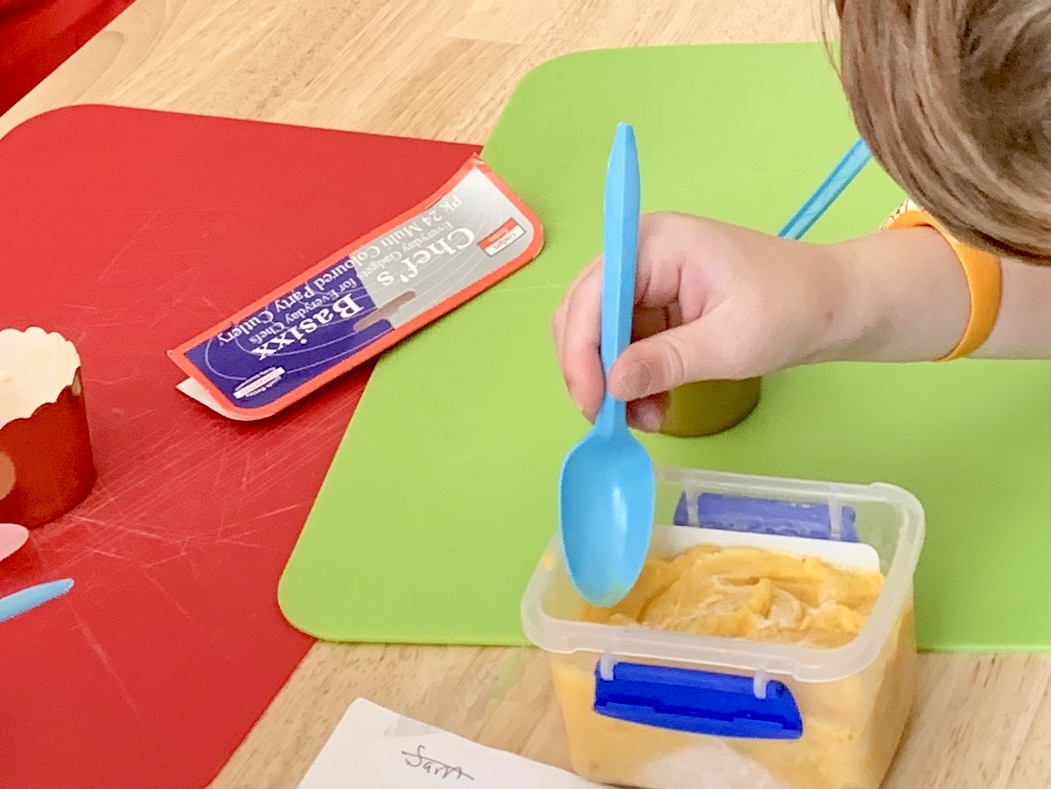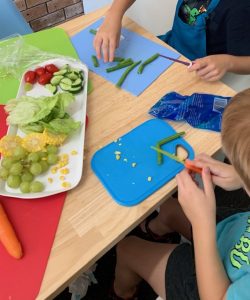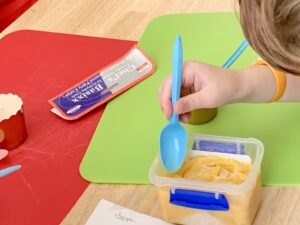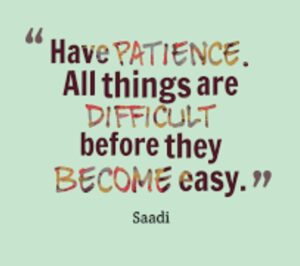
The greatest art is to sit and wait and let it come – Yogi Bhajan

The art and power of waiting is a concept that is not new. We have heard it in many contexts and specific to Speech Pathology, waiting is a powerful tool in language programs such as Hanen that helps children with delayed speech and language skills to step up to the platform to begin a conversation with their parents.
But how does it pertain to food? I have 4 lessons in waiting for you to try at home to help your child with feeding difficulties.

The child who is a fussy eater
- You are at a friend’s house and they offer your child a new food – rather than jumping in – wait…. Wait for your child’s response, they might surprise you and step up to the challenge of the new food. If not, then politely step in and offer your child a few choices so they can pick from a selection of safe choices
- You are at relative’s home and the children are all given a meal to eat – wait – wait to see what your child does when his/her cousins start eating it. If he/she doesn’t eat it, after a little while, in a super chilled way, placed a bowl of “shared” safe food eg bread rolls on the table for all the kids to share
- You are chatting with friends and your friend asks how your child is going with their fussy eating – wait… pause and remember that labels stick. Rather than roll your eyes and jump to describing all the negatives first, talk about the positives – what your child has done both with food and in other parts of life. This changes the focus and doesn’t always negatively label your child because each child has their strengths and own challenges. Focus on what your child can do and see how it changes your mindset and level of happiness in life.
The child who is learning to self feed
- You have served up the bowl of food on the table and placed a spoon next to them. Wait… busy yourself in the kitchen and give them that time to decide if they are going to pick up that spoon and try (probably with making a lot of mess) to feed themselves. Sometimes waiting can go a long way in encouraging self-feeding (the key is to walk away with a pretence eg “mum forgot the kitchen tongs for the salad, I will be right back….. now where did I put those tongs…”.

The child struggling with textures and reaches for a new food
- If your child is struggling with textures, this power of waiting (under supervision) still plays a role. If they pick up a food that is trickier to chew, pause and wait – supervise closely so they are safe but wait to see if they can manage the new texture. If they are looking like they want to spit it out, casually hand them a napkin to spit it out and place it in the bin. Don’t say anything, keep it cool and calm. One day they might surprise you and chew a new fruit that they couldn’t manage in the past.
- If they gag – wait – don’t jump in, there is a big difference between gagging and choking. Wait to see if them can chew the food a bit more and then swallow. Or do they spit it out only to pick it up and put it straight back in for another chew? Supervise closely but just pause – it might just be a bit of oral sensitivity not a full blown safety issue. There is a difference.
The child who is tube weaning
- If your child is tube weaning, give them that extra time at the family table to settle into the meal, wait for them to explore some foods before starting their tube feeds. But keep them at the dinner table while the tube feed continues so they learn the link between fully and satisfied stomach and the food (sight, smells and ideally touch and taste) of foods in front of them while everyone shares the meal together.

Take home message here – don’t just jump in and respond for your child, give them time to process and respond. Wait…. for them.
Remember that sometimes a bit of watchful waiting and patience is an art that we are all developing. But the greatest gift of sitting and waiting is that your child might step up to the platform and become empowered themselves (what a great celebration that will feel for them) and you will remember that all things are difficult (remembering learning to ride a bike?) before they become easy – wait, stay patient and trust the journey.
Wishing you happy mealtimes
Val
Paediatric Feeding Speech Pathologist @ Let’s Eat! Paediatric Speech Pathology
This website and information on this blog post is provided for educational purposes. It is not meant or intended to replace Speech Pathology assessment and management nor medical or nutritional care for a child. It is recommended that you discuss any concerns or questions you might have with your Speech Pathologist and managing Doctor and develop an individualised team plan specifically for your child.

About the author of this blog post
Valerie Gent is an Australian based Speech Pathologist with 15 years experience in Paediatric Feeding. She has opened a private practice called ‘Let’s Eat! Paediatric Speech Pathology’ in 2013 for Newcastle based babies and children with feeding difficulties. Valerie is passionate about working in the area of paediatric feeding and special needs and has been involved in the teaching and training of Australian Speech Pathology University students and allied health professionals. Prior to starting her private practice, she worked in acute paediatric hospitals in neonatal intensive care units, feeding clinics and clinics for children with special needs for 10 years. You can find out more about Valerie Gent and ‘Let’s Eat! Paediatric Speech Pathology’ via her website www.letseatspeech.com.au and Facebook page www.facebook.com/LetsEatPaediatric SpeechPathology or email her on valerie.gent@letseatspeech.com.au
